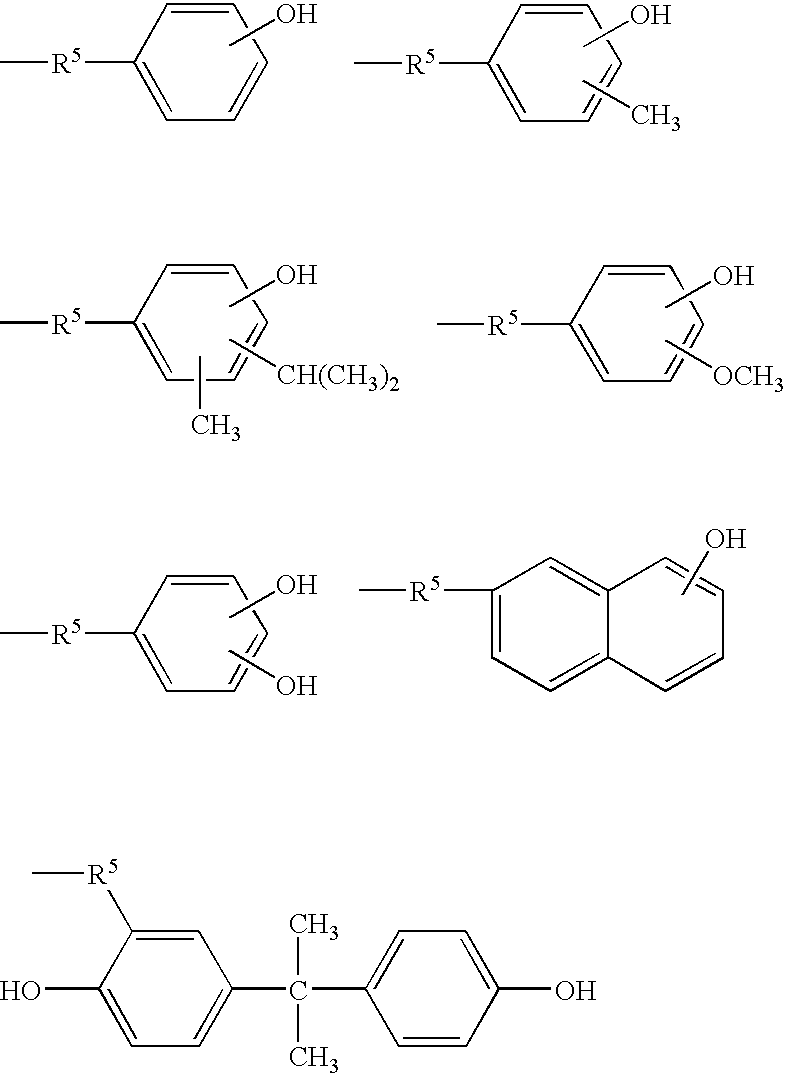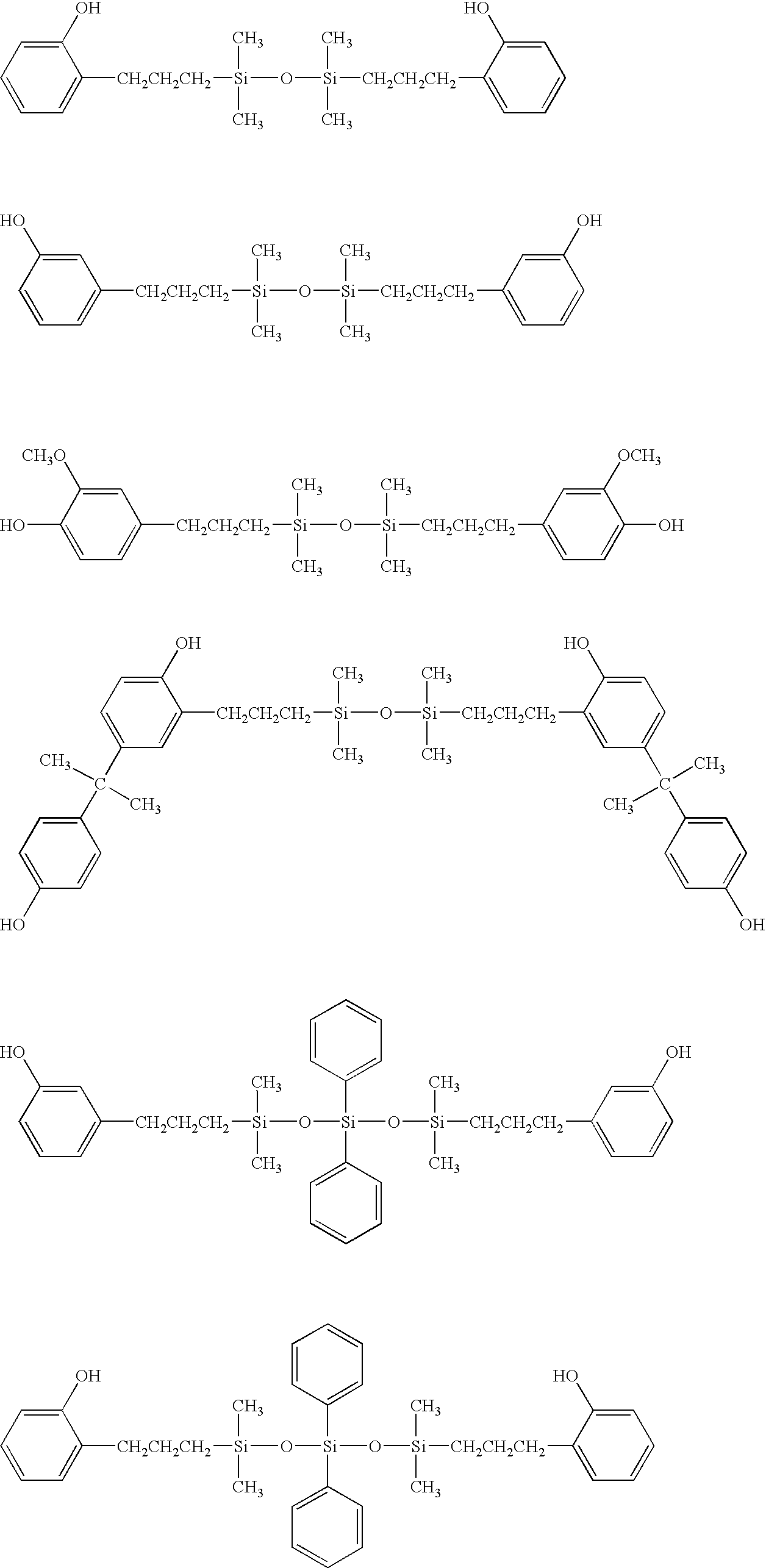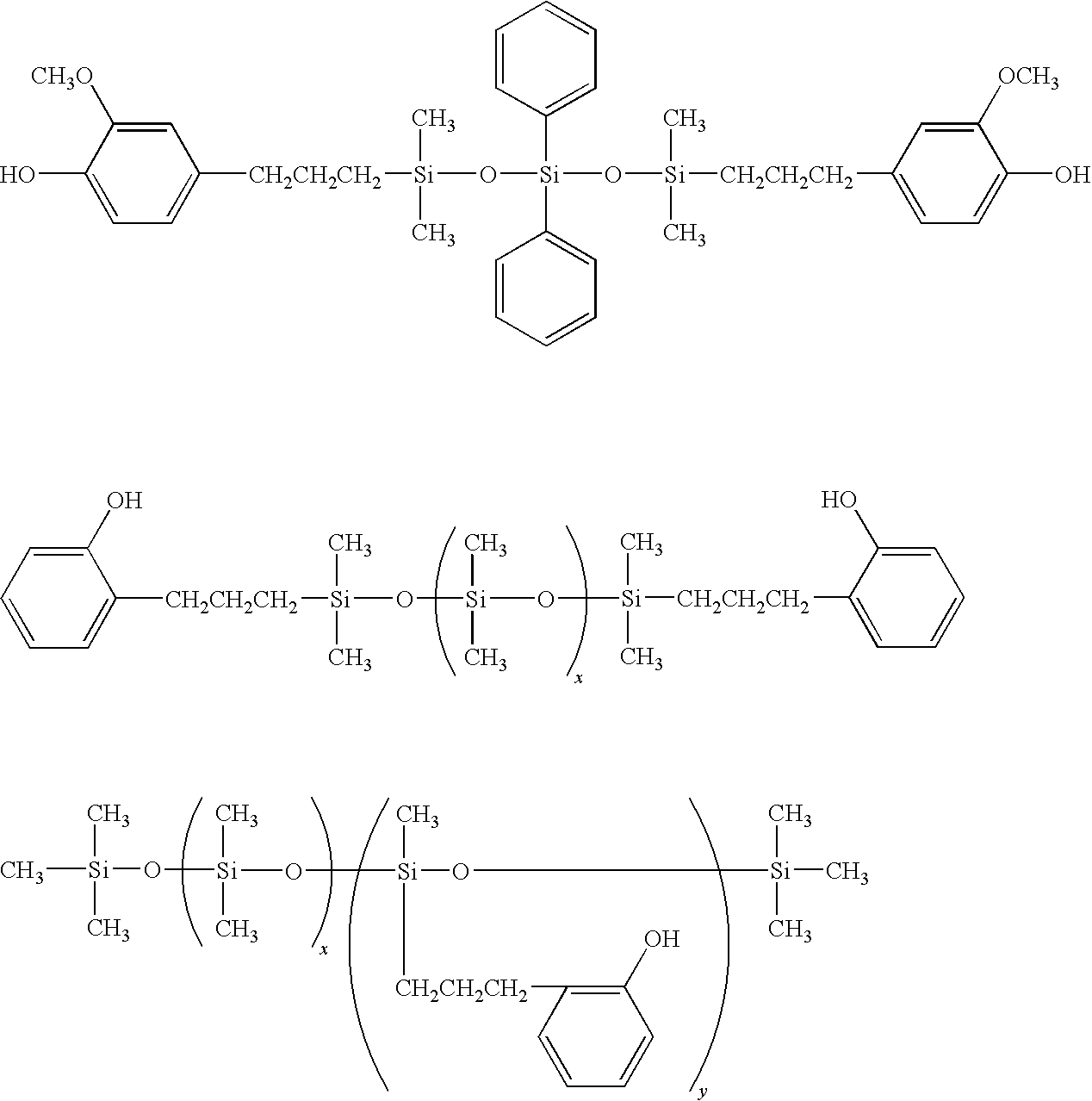Curable Silicone Composition And Cured Product Thereof
a silicone composition and curing technology, applied in the direction of electrochemical generators, conductors, chemistry apparatus and processes, etc., can solve the problems of low strength and low modulus of elasticity, high coefficient of thermal expansion, and limited use of such compositions, etc., to achieve excellent elasticity, excellent handling and workability, excellent elasticity, and excellent elasticity
- Summary
- Abstract
- Description
- Claims
- Application Information
AI Technical Summary
Benefits of technology
Problems solved by technology
Method used
Image
Examples
example 1
Practical Example 1
[0053]A curable silicone composition was prepared by mixing the following components: 5.0 parts by mass of an organopolysiloxane having a mass-average molecular weight of 1,000, viscosity of 9,630 mPa·s, an epoxy equivalent of 345, and represented by the following average unit formula:
[X(CH3)2SiO1 / 2]0.4[C6H5SiO3 / 2]0.6
(where X is a 3-glycidoxypropyl group); 4.0 parts by mass of an organopolysiloxane having viscosity of 3,050 mPa·s and represented by the following formula:
1.0 part by mass of a microcapsule type amine catalyst (HX-3941HP; the product of Asahi Kasei Corp.; amine content 40 mass %); 90 parts by mass of a flakes-type silver powder (the product of Fukuda Metal Foil & Powder Co., Ltd.; average particle size: 6.4 μm; tap density=4.6 g / cm3); 2 parts by mass of an epoxy-containing silicone rubber powder (Torefil® E-601; the product of Dow Corning Toray Co., Ltd.; epoxy equivalent=5,000; average particle size is in the range of 1 to 5 μm); and 5 parts by mas...
example 2
Practical Example 2
[0054]A curable silicone composition was prepared by mixing the following components: 3.9 parts by mass of an organopolysiloxane having a mass-average molecular weight of 1,000, viscosity of 9,630 mPa·s, an epoxy equivalent of 345, and represented by the following average unit formula:
[X(CH3)2SiO1 / 2]0.4[C6H5SiO3 / 2]0.6
(where X is a 3-glycidoxypropyl group); 3.1 parts by mass of an organopolysiloxane having viscosity of 3,050 mPa·s and represented by the following formula:
1.0 part by mass of a microcapsule type amine catalyst (HX-3941HP; the product of Asahi Kasei Corp.; amine content 40 mass %); 90 parts by mass of a flakes-type silver powder (the product of Fukuda Metal Foil & Powder Co., Ltd.; average particle size: 6.4 μm; tap density=4.6 g / cm3); 2 parts by mass of an epoxy-containing silicone rubber powder (Torefil® E-601; the product of Dow Corning Toray Co., Ltd.; epoxy equivalent=5,000; average particle size is in the range of 1 to 5 μm); and 6 parts by mas...
PUM
| Property | Measurement | Unit |
|---|---|---|
| particle size | aaaaa | aaaaa |
| mole % | aaaaa | aaaaa |
| thermally conductive | aaaaa | aaaaa |
Abstract
Description
Claims
Application Information
 Login to View More
Login to View More - R&D
- Intellectual Property
- Life Sciences
- Materials
- Tech Scout
- Unparalleled Data Quality
- Higher Quality Content
- 60% Fewer Hallucinations
Browse by: Latest US Patents, China's latest patents, Technical Efficacy Thesaurus, Application Domain, Technology Topic, Popular Technical Reports.
© 2025 PatSnap. All rights reserved.Legal|Privacy policy|Modern Slavery Act Transparency Statement|Sitemap|About US| Contact US: help@patsnap.com



